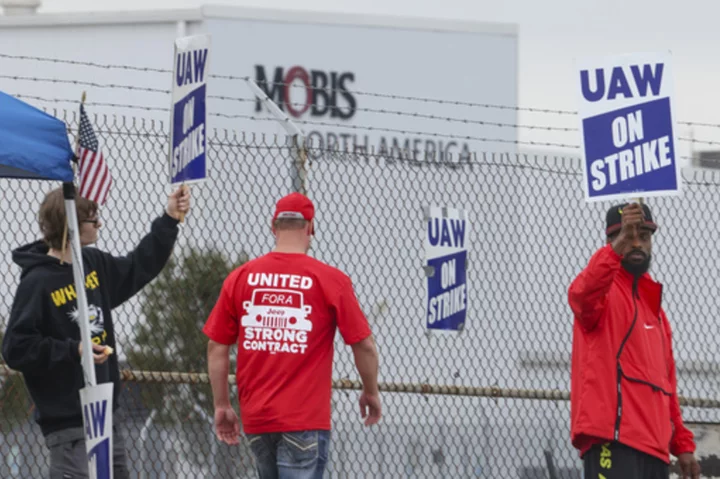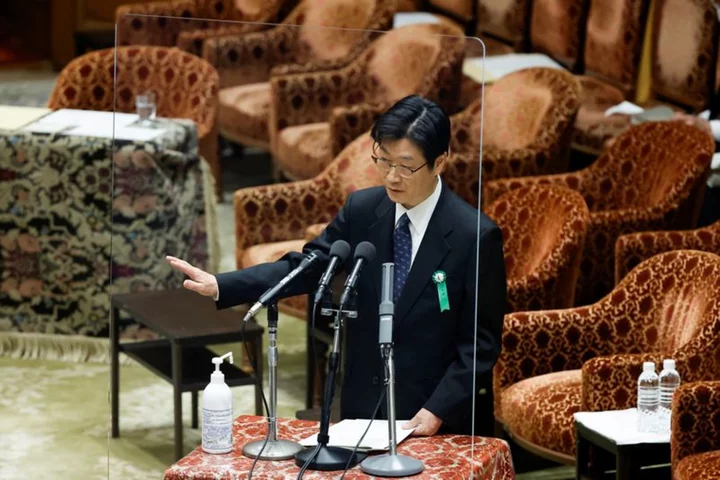DETROIT (AP) — The United Auto Workers strike against Detroit’s big three automakers that spread to dozens of parts distribution centers one week ago could deepen Friday.
The union has vowed to hit automakers harder if it does not receive what it calls a substantially improved contract offer as part of an unprecedented, simultaneous labor campaign against Ford, General Motors and Jeep maker Stellantis.
UAW President Shawn Fain is scheduled to make an announcement at 10 a.m. Eastern time in a video appearance addressing union members. Additional walkouts will begin at noon Friday, the union said.
The automakers are offering wage increases of 17.5% to 20%, roughly half of what the union has demanded. Other contract improvements, such as cost of living increases, are also on the table.
The union went on strike Sept. 14 when it couldn’t reach agreements on new contracts with Ford, General Motors and Jeep maker Stellantis.
It initially targeted one assembly plant from each company. Last week it added 38 parts distribution centers run by GM and Stellantis. Ford was spared the second escalation because talks with the union were progressing.
The union wouldn’t say what action it would take on Friday, reiterating that all options are on the table.
Fain said Tuesday that negotiations were moving slowly and the union would add facilities to the strike to turn up the pressure on the automakers.
“We’re moving with all three companies still. It’s slower,” Fain said after talking to workers on a picket line near Detroit with President Joe Biden. “It’s bargaining. Some days you feel like you make two steps forward, the next day you take a step back."
The union has structured its walkout in a way that has allowed the companies keep making pickup trucks and large SUVs, their top-selling and most profitable vehicles. It has shut down assembly plants in Missouri, Ohio and Michigan that make midsize pickup trucks, commercial vans and midsize SUVs, all of which are profitable but don’t make as much money as the larger vehicles.
In the past the union had picked one company as a potential strike target and reached a contract agreement with that company that would serve as a pattern for the others.
But this year Fain introduced a novel strategy of targeting a limited number of facilities at all three automakers, while threatening to add more if the companies do not come up with better offers.
Currently only about 12% of the union’s 146,000 workers at the three automakers are on strike, allowing it to preserve a strike fund that was worth $825 million before Sept. 14.
If all of the union’s auto workers went on strike, the fund would be depleted in less than three months, and that’s without factoring in health care costs.
____
Koenig reported from Dallas.









